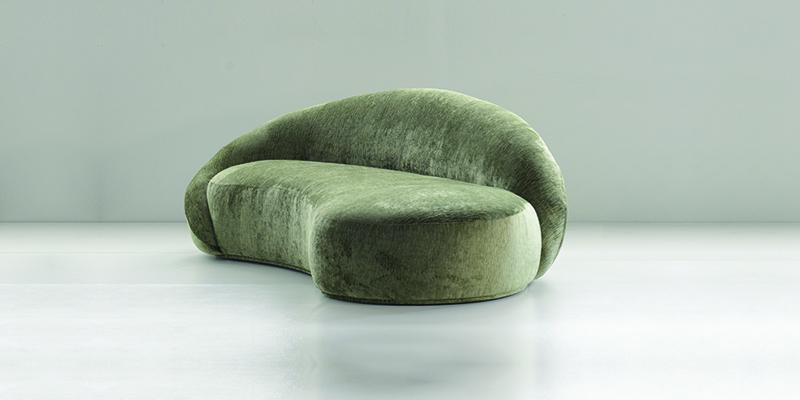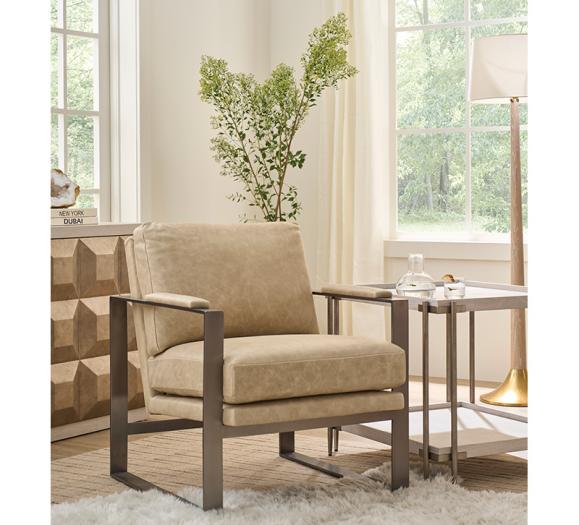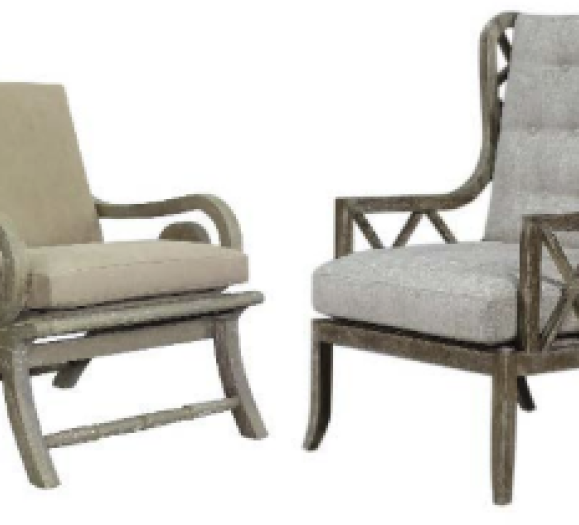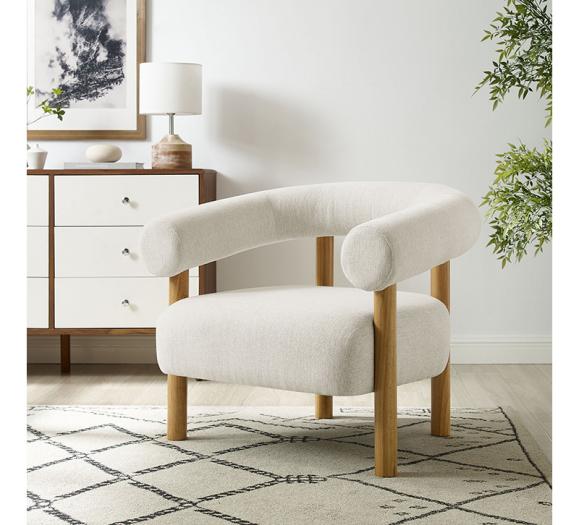For customers and clients seeking an ultra-personal level of design service, custom upholstery can offer a unique opportunity to tailor a piece of furniture to suit their exact style and needs. “Designers can add value to their client interactions when they can offer something that is not something everyone else can buy online and you won’t see it next door,” says Tina Nicole, Co-Founder and Creative Director of Nathan Anthony. “You won’t see it in someone else’s house. People at a certain income level want something different. They want something special. They want something to call their own that they designed.”
Nathan Anthony has offered custom upholstery since the company was founded in 2005, offering custom services that range from basic — think adding a couple inches to the height of a piece — to what Nicole calls “super custom,” that is, making changes that will drastically change the overall look and feel of a product.
“Every piece is made to order,” Nicole says of the Los Angeles company’s manufacturing process. “Fifteen different people touch the piece at any given time, so it’s a very handmade product. When you have something that’s so special like that, you get a really personalized experience. We feel custom is like a form of self-expression as well.”
Universal Furniture got into the upholstery business five years ago, according to Neil MacKenzie, Vice President of Marketing. In 2019, the company acquired Southern Furniture, in Conover, NC, and in June 2020 rolled out the special-order upholstery division, based in Conover. The program includes 200 frame styles, 400 fabrics, 50 leathers, six leg finishes and three nailhead finishes.
“It’s allowing the customer to get what they want,” MacKenzie says of the special order upholstery program. “From a fashion standpoint, people are used to being able to coordinate an outfit; it’s no different in the home. If you’re on your own or working with an interior designer or working with a retailer, you’re trying to update a look, and a lot of folks want something that provides a personal touch.”
According to Caroline Hipple, President of Norwalk Furniture, Norwalk is in the custom upholstery business for two reasons. The first is to offer a solution for end users who want to express themselves through their furnishings without replicating what their friends are doing.
“Number two is that we’ve developed a skill and made thousands and thousands of pieces of furniture upholstery last year, one at a time,” she says. “Our skill is to make a piece, your piece for you, as you want it, in a combination that helps the consumer realize their vision. That doesn’t come doing a thousand pieces all the same, off the line. It comes through handcrafted, careful curation of materials, and the ability to do it quickly, once someone’s made a choice.”
Although the custom factor means no two pieces are the same, there are trends that permeate through the special orders that manufacturers are seeing. As upholstery is getting more use in the home, often for multiple functions, durability and cleanability are important. Today’s performance fabrics allow for this resilience without sacrificing style, with performance leathers and velvets taking hold. Performance fabrics also allow customers to feel more comfortable selecting lighter colors, a trend Hipple notes has grown as performance textile technology improves.
Comfort and function are also factors in customized upholstery that often go hand-in-hand. In determining the size and shape of a piece, it’s first important to identify how it will be used. A large sectional in front of a television will have different comfort needs than a sofa in a formal living room. This, in turn, affects everything from the seat height to the fill of the cushions.
Nicole says Nathan Anthony’s customers are drawn to the tactile nature of their upholstered pieces, so they lean toward extra padding and rounded edges for an enticing look and feel.
“We tend to add extra foam and extra down or fill on the outside on things that you don’t typically see, which is on arms and backs and places where the hands will touch,” Nicole says. “People are really invited by these rounded, extra padded pieces. It just creates this need to want to touch them, feel them, sit in them. Instead of just regular down, we’ll do double down, even on tight seats.”

ONLINE TOOLS
Digital tools have simplified the customization process by allowing retailers and designers to create pieces to their exact specifications. Rather than holding a fabric swatch to a frame and imagining what the finished piece will look like, sophisticated online tools enable customers to select exactly what they want and see it before it’s made.
Universal has been investing in its special order upholstery program since last June.
“That investment includes the ability to preview and customize online with the options that are available: 200-plus frames in over 400 different fabrics and 50 different leathers,” MacKenzie says. “You’re able to use the website to select those options, preview it, and you can see a 360 view of the item. You can zoom in and see a lot of the detail within each of the styles, whether you’re looking at a leather or a fabric or a print.”
The Norwalk 360 mobile app and the Build Your Own tool on Norwalk’s website offer similar functionality, allowing users to select a silhouette and customize everything about it, from the dimensions to the legs to the welting. At the end of the process, the system provides detailed instructions for writing the order.
“It’s fun and foolproof and fast,” Hipple says. “It’s taken a lot of the guesswork out of creating a $5,000 sectional at cost and shows what it looks like. It builds the security in your choice and removes the fear factor.”
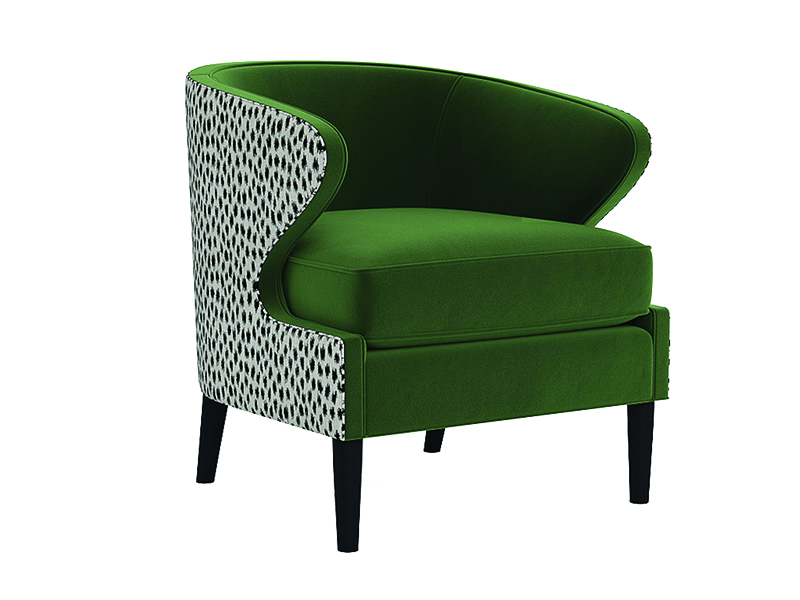
PANDEMIC EFFECTS
Lead times for custom upholstery exceed those of off-the-shelf options by nature; a piece custom made for a client or customer will take longer to arrive than a piece sitting in a warehouse. Domestic manufacturing is an asset here, which is why many custom upholstery manufacturers produce made-to-order pieces stateside. But the current state of the supply chain is further increasing these lead times, whether due to raw materials shortages, increased demand or shipping delays.
In January 2020, as COVID-19 hit China, Hipple ordered eight months worth of fabric from Norwalk’s Chinese suppliers, not knowing the effect the pandemic would have in the U.S. and on global manufacturing. The company also stocked up on roll goods for their April 2020 fabric launch. These proactive moves helped Norwalk keep lead times well below the industry average, even today.
“We went into the pandemic wanting to make sure when we reopened that we could support our retailers and our designers,” Hipple says. “You have to pay your rent and you have to pay your salaries, and in order to do that, you have to ship products.”
Nathan Anthony credits its industry partnerships with the company’s ability to keep producing product when others were unable to get the raw materials.
“We still have these very close relationships with smaller suppliers, so we’re their A-list customers,” Nicole says. “We have been promised to get raw materials, so we haven’t actually had to extend our lead times too much, but we are much longer than we typically are.” But “much longer,” for Nathan Anthony is still shorter than most, Nicole says, attributing the longer times to the increased demand rather than the supply chain.
Transparency and communication have been vital during this time, both from the manufacturers to their retail and design customers and from the trade to the end users. Hipple has been regularly penning letters to Norwalk’s customers, employees and vendors.
“When you’re in these challenging times, the one thing you can always do is communicate,” she says. “That’s kind of a mantra of ours. Tell people the truth. Tell them what the situation is. Empathize with what the condition is because we’re all going through it together. Tell them what we’re doing about it and give them a recommendation of what they can do about it.” This same philosophy can extend to retailers and designers keeping end users updated throughout the process, helping to manage expectations amid so much lingering uncertainty.
The demand for custom upholstery shows no signs of slowing down, as home takes on a new meaning and customers are seeking to update their living spaces in a post-pandemic world.
“People have been stuck in their homes now for a year, so they see what needs to be changed or made special for them,” Nicole says. “Now people are visiting each other’s homes so they can see how it’s changed or how they’ve renovated. Now you can show it off and say, ‘This is an expression.’ It’s an expression of your personality when you bring in custom pieces.



